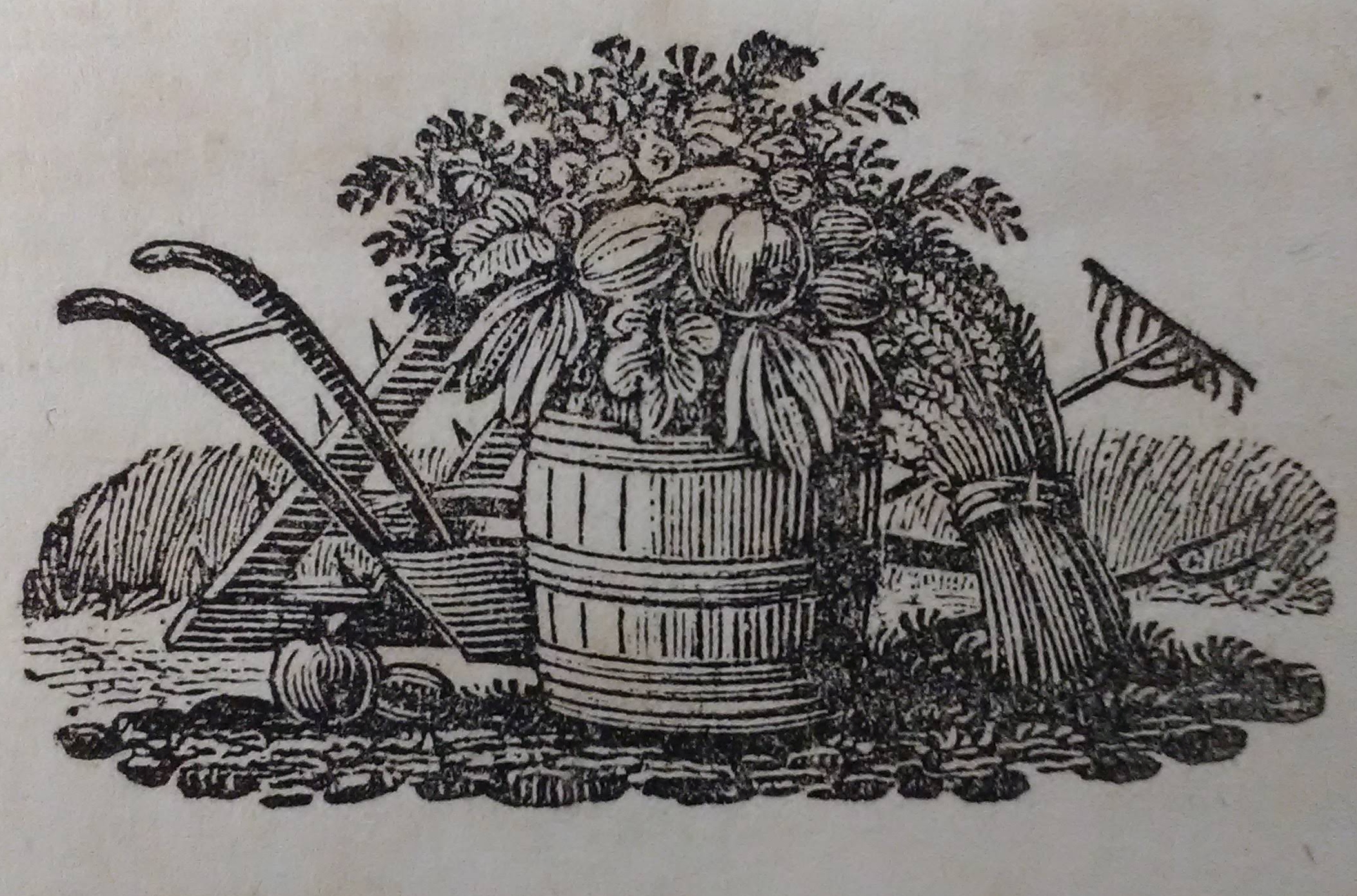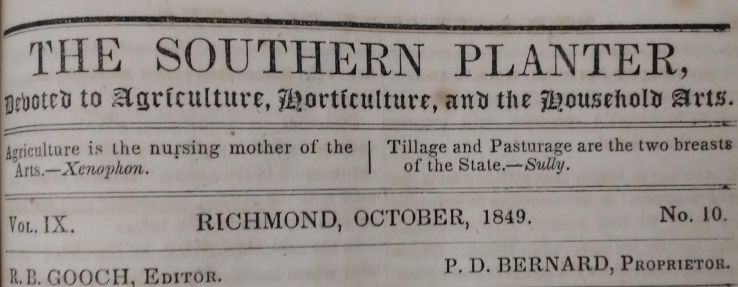
Foodie Friday: Curious Cookery of the 19th Century - "Good and Cheap" Vinegar; Early Nutrition Science

In the early 19th century, people made at home items that today we usually buy at the store. Vinegar was one, and the October 1849 issue of The Southern Planter (p. 312) had a recipe for making it:
To 8 gallons of clear rain water, add 3 quarts of molasses, turn the mixture into a clean tight cask, shake it well two or three times, and add 3 spoonfuls of good yeast, or 2 yeast cakes. Place the cask in a warm place, and in ten or fifteen days, add a sheet of common wrapping paper, smeared with molasses, and torn in narrow strips, and you will have good vinegar. The paper is necessary to form the 'mother' or life of the liquor.
Perhaps the paper strips (on which "mother of vinegar" formed) was used to start additional batches.

The same issue of The Southern Planter contained an article titled "Analysis of Food" that explains the chemical composition of plants and vegetables. After claiming that "there are sixty simple elements forming the great globe" (today we know it is much more), the author posed this question: "which of these are essential to our own material frames, and which plants supply?" The answer, according to the article, was fifteen: iron, manganese, potassium, sodium, calcium, magnesium, chlorine, flourine, carbon, silicon, sulphur, phosphorus, oxygen, hydrogen, and nitrogen.
The article then explained the complicated relationship of the chemistry of humans, plants, and the soil. After stating that "these elements do not all unite indiscriminately to form the various organs of our system," it shows how each "has its particular office and place." For example, "flourine helps especially to form the hard enamel of the teeth; and bones being white, are made chiefly of calcium or lime and magnesia."
The article recognized it was more complex than that, because the elements must be "definitely united together in various compound bodies," such as albumen, fibrin, and "caeein" (casein?), which "have all been elaborated by the wonderful mechanism of vegetables, and yielded up as sacrifices to form and sustain the higher orders of creation[.]" Plants themselves are "fed" by the soil, which "must contain the fifteen simple elements above enumerated, and mingled together in due proportions."
This could be considered an early recognition of the importance of nutrition science (and perhaps a subtle plug for the farmer's or planter's role): "From a view of such facts we are enabled to form some ideas of the chemistry of agriculture and vegetation, as the great and ultimate source of food for man." Nonetheless,the article calls for a further study of what today we know as nutrition (and agronomy), and that it requires "the largest acquisition of science, and the most delicate attention to minute particulars." The author concludes by asking "who does not see the importance of the subject?"

The Hathi trust has some years of The Southern Planter online, but unfortunately not any from 1849. If you would like to review the original print version for October 1849, please request an appointment to see it using the Special Collections online form (please provide us with the call number: S1 .S6 v.9(1849).)